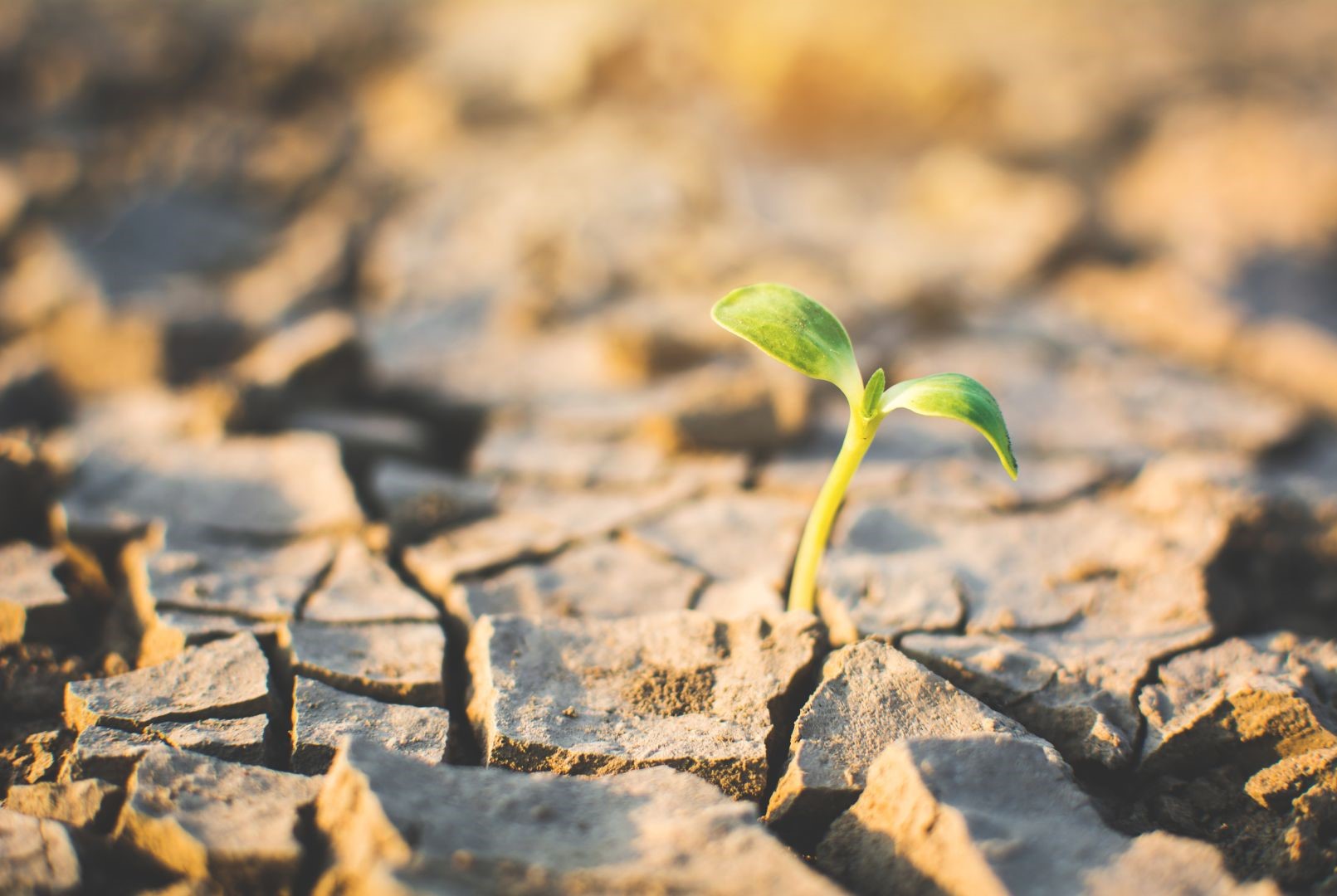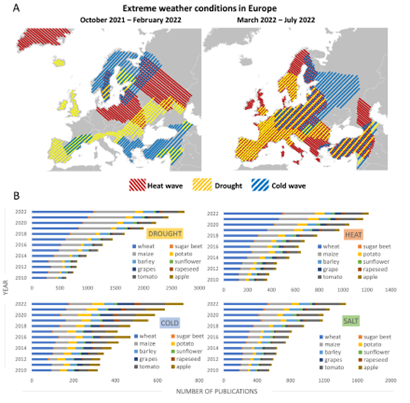

Co-authors: Andreas Ioannou, Vasileios Fotopoulos
Introduction to Nanomaterial-Based Seed Priming
Enhancing abiotic stress tolerance in plants is of great significance for improving crop yield, sustaining global food security, as well as reducing water demand in the ever-intensifying agricultural sector. Plants treated at the seed stage with specific chemical agents depict prolonged enhanced tolerance when exposed to sub-optimal abiotic conditions. This results in better crop establishment and enhanced growth while achieving improved biomass under control conditions.
For this reason, we focus on the development of cutting-edge technology based on naturally-derived biocompatible/biodegradable hydrogels with embedded seed priming agents to be employed as multifunctional coatings in green seed priming technologies, the results of which will affect national, European, and international agro-industries and seed markets. All this was performed as part of the Yieldshield project, co-funded by the European Union and the Republic of Cyprus through the Research and Innovation Foundation. Let us find out more.
What is priming?
Over the years, extreme weather conditions have occurred with increasing levels of drought, extreme temperatures, and salinity (Figure 1). Therefore, developing new technologies to improve plant tolerance to stress factors is important. Priming is the process of prior exposure to a biotic or abiotic stress factor, making a plant more resistant/tolerant to future exposure. Priming can also be achieved by applying natural or synthetic compounds acting as signaling transducers, activating the plant’s defense system. Exposure to a stimulus allows a plant to respond more rapidly and effectively to a later stimulus (the same or equivalent) than a non-primed plant. A first encounter with the stress can trigger the establishment of a molecular memory that primes or acclimates the plant.

Figure 1. Extreme weather conditions in Europe from October 2021 until July 2022 (Kopecká et al., 2023)
Types of Priming Agents
There are three different classes of priming agents.
- Chemicals that include
- hormones (e.g. salicylic acid, jasmonic acid, strigolactones etc.);
- reactive oxygen, nitrogen, and sulfur Species (RONSS: e.g., NO, H2S, H2O2) and
- small organic molecules (e.g., melatonin, putrescine).
- Microorganisms consisting of:
- arbuscular mycorrhizal fungi (AMF, such as Funneliformis mosseae, Rhizophagus irregularis) and
- plant growth-promoting bacteria (PGPR, soil bacteria living in the rhizosphere that are involved in promoting plant growth and development).
- Nanomaterials, which include:
- organic nanoparticles,
- inorganic nanoparticles and
- polymers (e.g., chitosan, hydrogels).
Why is seed priming important? – Benefits of Seed Priming
Efficiency and Cost-Effectiveness
Seed priming is more efficient than whole-plant priming because it requires less water, nutrients, time, and labor. Primed seeds can be sown directly in the field, resulting in more uniform germination, seedling emergence, growth, and higher yields. Additionally, seed priming activates the plant’s defense mechanisms before planting, improving stress tolerance against environmental challenges like drought, heat, and salinity.
Stress Tolerance and Yield Improvement
Primed seeds exhibit enhanced stress tolerance as they are pre-equipped to handle environmental stresses. This technique is also cost-effective due to its minimal resource requirements and the simple equipment needed. By decreasing the risk of crop failure and potentially leading to higher yields, the cost of priming is often offset.
Challenges in Priming Technologies- Factors Affecting Priming Efficiency
The effectiveness of seed and plant priming technologies depends on various factors, such as:
- the type of seed,
- the priming agent used,
- the duration and temperature of treatment, and
- the environmental conditions during germination.
Standardizing these parameters is essential to ensure consistent results across different experiments.
Limitations in Commercial Application
In addition, some priming technologies can be expensive and time-consuming, especially for large-scale applications. This can limit their use in commercial agriculture or reforestation projects.
Another problem is that some priming agents, such as hormones and enzymes, have a limited shelf-life and can lose their effectiveness over time. This can result in inconsistent results if the priming solution is not freshly prepared or stored properly.
Environmental and Regulatory Concerns
Chemical and synthetic hormone-based priming agents can pose environmental risks if not handled properly, potentially contaminating soil and water resources. Additionally, using certain priming agents may require permits, which can be a time-consuming and costly process.
Crop-Specific Responses
Different crops may respond differently to priming technologies, necessitating customized priming protocols for different plant species or varieties. This variability limits the broader applicability of priming technologies across diverse crops.
Future Directions for Priming Technologies
Exploring New Priming Agents
Researchers are exploring new priming agents, including biostimulants, microorganisms, and natural compounds, to enhance plant growth and stress tolerance. These agents can activate stress-resistance genes, offering a new avenue for crop improvement.
Precision Priming and Digital Integration
Precision priming tailors treatments to the specific needs of individual plants or crops using precision agriculture techniques like remote sensing and precision irrigation. This approach identifies areas in fields requiring specific priming treatments and optimizing resource use.
Multifunctional and Gene-Edited Priming
Multifunctional priming involves combining priming agents to achieve multiple benefits, such as improved nutrient uptake and stress tolerance. Additionally, gene editing techniques like CRISPR/Cas9 can modify the expression of genes involved in plant priming, enhancing plants’ responsiveness and overall performance.
Seed Coating Technology
Seed coating technology involves applying a thin layer of material to a seed’s surface to enhance germination and growth. This technology can potentially improve crop yields and reduce the need for fertilizers and pesticides.
The YieldShield Project: Innovation in Priming Technologies
YieldShield aimed to increase the yield/production and improve the quality characteristics of tomato fruits, baby spinach, and wheat under abiotic stress conditions (drought, salinity, or heat stress) to which proprietary synthetic molecule NOSH-A and melatonin were applied either directly (in the case of NOSH-A) or as a functional polymer coating (Hydrogel/Melatonin). The evaluation of nanomaterial-based seed priming was performed at laboratory-based and glasshouse/field experiments. The activation of tolerance mechanisms demonstrated that chemical seed priming could be an effective strategy against climate change-related stressors, like water deficits in crops. This approach works well in conjunction with advanced seed coatings that ensure the controlled release and delivery of protective compounds to plants.
Conclusion
The YieldShield project is transforming comprehensive seed priming technologies into eco-friendly stress management tools for commercial crop production. By addressing abiotic stress factors such as drought and salinity and enhancing growth under optimal conditions, these technologies bring seed priming closer to agricultural practice, fostering sustainability and resilience in crop production.
Acknowledgements: ‘‘YieldShield: Sustaining yield security through advanced seed treatments “(EXCELLENCE HUBS). This work was co-funded by the European Union and the Republic of Cyprus through the Research and Innovation Foundation (Project YieldShield: EXCELLENCE/0421/0462). The work is also linked with Recrop COST action 22157, an official partner of Wikifarmer gathering scientists who stand at the forefront of combating the increasing threat of climate change to global food security.
References:
Kopecká R., Kameniarová M., Černý M., Brzobohatý B., Novák J. (2023). Abiotic stress in crop production. International Journal of Molecular Sciences. 24(7), 6603.